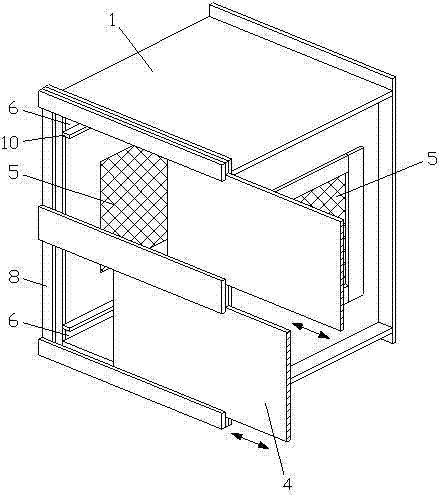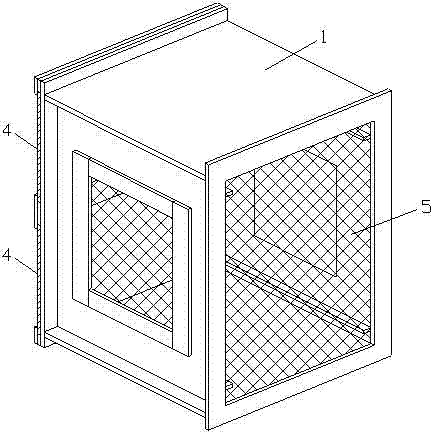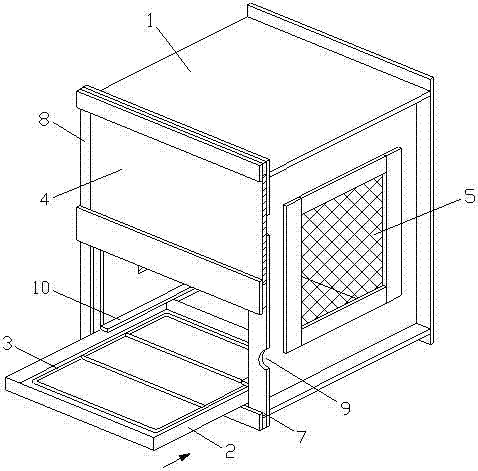Acrylic rice insect breeding cage and rice insect breeding method
A breeding cage and acrylic technology, applied in the field of animal husbandry, etc., can solve problems such as difficult watering, mixed ages of insects, increased chances of insect escape, etc., and achieve the effects of saving manpower and time, optimizing breeding conditions, and saving manpower and time
- Summary
- Abstract
- Description
- Claims
- Application Information
AI Technical Summary
Problems solved by technology
Method used
Image
Examples
Embodiment Construction
[0030] Such as Figure 1~3 Shown, a kind of acrylic rice insect rearing cage comprises cage body 1 and seedling raising tray 2, and described cage body 1 is the box-shaped structure that is made by a plurality of acrylic plates, and described box-shaped structure can be cube specifically; The front of the cage body 1 is symmetrically provided with two movable cage doors 4 up and down, and the cage door 4 is a plugboard, and the front side of the cage body 1 is provided with a slot 7 that is horizontally inserted and matched with the corresponding plugboard; The back of the body 1 is provided with an insect-proof net 5, and the bottom and top of the cage body 1 are symmetrically provided with two slots 6 structures for respectively placing the corresponding seedling raising tray 2, and the described seedling raising tray 2 is provided with a fixed absorbent paper Wireframe 3.
[0031] In this embodiment, the seedling raising tray 2 is used to hold the coniferous rice seedlings...
PUM
| Property | Measurement | Unit |
|---|---|---|
| Thickness | aaaaa | aaaaa |
Abstract
Description
Claims
Application Information
 Login to View More
Login to View More - R&D
- Intellectual Property
- Life Sciences
- Materials
- Tech Scout
- Unparalleled Data Quality
- Higher Quality Content
- 60% Fewer Hallucinations
Browse by: Latest US Patents, China's latest patents, Technical Efficacy Thesaurus, Application Domain, Technology Topic, Popular Technical Reports.
© 2025 PatSnap. All rights reserved.Legal|Privacy policy|Modern Slavery Act Transparency Statement|Sitemap|About US| Contact US: help@patsnap.com



